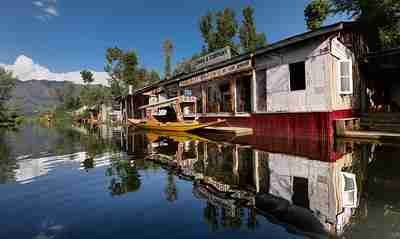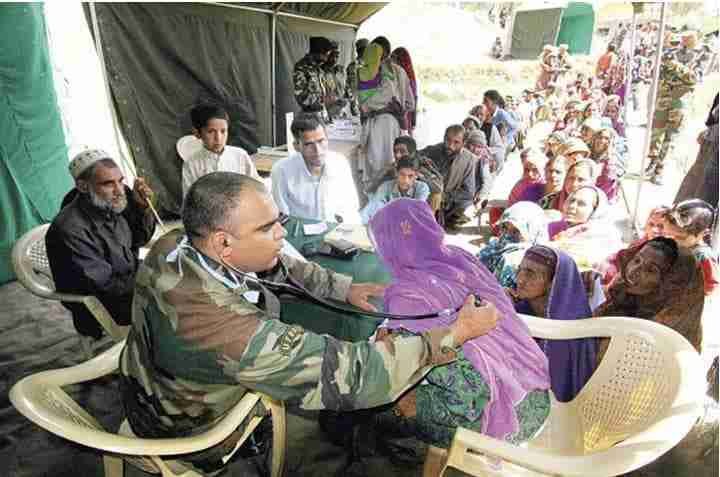Insurgency has been known since time immemorial. Kashmir has had to face this brunt for a long time. Many an empire was established post a successful insurgency by the founding rulers. As a form of battle, the advantages that it accrues to the weaker side makes it relevant and lucrative, irrespective of the technological advancements. While insurgencies have always been challenging to the state, cross border insurgencies make the task of the counter-insurgent all the more difficult.
Sustaining an insurgency requires safe havens to organise and train, equipment to execute plans and finances for procurement. Their availability across an international border, therefore, is a major impetus. Political support and international recognition are a bonus. During the course of history, there are many examples of insurgencies being conducted from safe havens in permissive areas of neighbouring states. Northern Ireland and the Irish Republican Army, Vietnam, the Algerian War of Independence, Oman in the 60s and 70s, Afghanistan in the 80s and presently, Balkans in the 1990s, Punjab and Kashmir are just a few examples of these.
Sustaining an insurgency requires safe havens to organise and train, equipment to execute plans and finances for procurement.
A study of these and others shows that one of the key factors for the defeat of insurgencies is the withdrawal of external support. However, other factors, including an image of an honest government, effective last-mile delivery of government schemes, meeting population aspirations and perceived economic improvement are equally important. These reduce local support, bring to the fore, disenchantment against the insurgents and force the latter to turn to terrorism, which often is the last nail in the insurgents’ campaign.
A strategic approach encompassing all the instruments of national power is effective against external support, but other factors also need to be addressed to cut off the insurgent from his support base—the people. For a counterinsurgent, these are categorised as WHAM or Winning Hearts and Minds Operations. A comprehensive top-down strategy – encompassing the administration and the security forces – hence is essential for these.
Assessment of Kashmir
Some often cite demographic and ethnic differences between Kashmir and the rest of India as a cause of the insurgency. However, the differences – if any – are similar to those with non-Kashmiri Pakistan—an often glossed over fact.
The Kashmiri economy is founded on farming, rug making and handIcrafts, all trades in which the economic return is limited. Unemployment is an area of grave concern. Currently, accessible unemployment figures peg the same between 5% to 16.2%. However, these figures display only the number who registered themselves as unemployed. Since there are no significant gains in registering, the validity is doubtful. Significant industrial development is therefore essential to enable the younger population other options; apart from working elsewhere in India or becoming unemployed or joining the insurgents to try and change the situation.

In addition, there are significant problems in creating economic growth through government expenditure, as the UT already has amongst the highest revenue deficits in the country. Any increase is likely to lead to further deterioration of the infrastructure which is essential to attract private investment.
Last-mile-delivery of governance in terms of quality education, healthcare, disaster relief etc is limited and is often cited as an example of corruption. Even when available, these are based on the security structure and are thus viewed suspiciously. Parents, especially in remote regions hence often prefer to send their wards to madrassas, rather than to other educational institutes as they believe that ‘the education may or may not give their children a future but the madrassa will make them a better human’.
Hence, the key ingredients of a WHAM strategy will have to encompass all arms of governance, include significant improvement of the standard of living while negating the image of corrupt outsiders’ government.
WHAM Strategy
Demography, ethnicity and religion have always been rallying points in any anti-establishment campaign. A concerted campaign is required to counter these. Human desire is not a linear process based on an individual’s desires, but rather is based on perceptions of others’ desires. The complete marketing industry is based on this. The assistance of marketing professionals therefore may be sought on not only the media but also of themes. Issues like demographic changes enforced in Pakistan occupied Kashmir and lack of development there need to be subtly put across.
The Islam which came to Kashmir was Sufism – a tolerant amalgamation of Islamic and Hindu beliefs. It has been replaced with radical Islam. Today, the Sufi shrines are neglected. Even candles are lighted on the peer baba shrines, only by the security forces. The pre 80s generation voice their concerns privately. They need a voice. Organisations like SPIC-MACAY need to be partnered to not only promote Kashmiri Sufi artists all over the country but also within Kashmir. Economic upliftment is another critical factor. It has to be based on short, medium and long term goals.
In the short term, Sadbhavana tours need to be refocused on promoting Kashmiri handicrafts. Every summer, most Indian cities witness Kashmiri artisans trying to sell these on rickshaws. Simultaneously, one can witness a confederation of various industries promoting handicrafts of other nations including those from South and South-East Asia. An Industry-Sadbhavana partnership can help Kashmiri artisans cut costs while simultaneously achieve the Sadbhavana aim of awareness. Best results would be achieved if artisans from remote Kashmir can be amalgamated.

Geographical indication of Kashmiri agricultural produce also needs to be done at the earliest. Products like sour apples and ‘Kadam Saag’ are unique, have more health benefits than other currently promoted products and yet unknown even in the rest of India. Promoting these would boost the income of remote Kashmiri agriculturists unable to benefit from traditional products.
Sports are a great melting pot and the success of sports teams gives a feeling of achievement to the whole community and not just to the players. Sports teams from the UT, are unable to practice due to lack of infrastructure in general and winters in particular. Various teams need to be suitably adopted and assisted for the same. Security forces infrastructure can be used for this.
In the medium and long term, skill-building and employment generation would be critical. Employable skill-building would be the ideal foil to lure the unemployed youth away from the insurgency. Albeit, the same would require extensive industry involvement. Measures beyond tax breaks need to be considered for implementation.
One way to incentivise industry would be to give an option to spend CSR funds for skill building in the area and give credit in excess of funds actually spent. Industry seeking the benefit must assure direct employment for a certain minimum percentage of individuals trained by them. In turn, the state provides safety and insurance to the facilities and personnel so employed. Losses if any due to insurgent action, should be reimbursed in full to the industry.
By leveraging internet penetration, Blockchain & AI and ensuring transparency, it is possible to effectively fight the image of a corrupt government. It would need to be ensured that:
- No single contractor – directly or through intermediaries – is awarded more than a small fraction of the contracts.
- Complete information of the contract be proactively released immediately on completion of a job. This would permit the population at large to access information and raise objections – if any – on the quality of work.
- Technologies like telemedicine be introduced to ensure quality medical facilities even in the remote areas.
Conclusion
Cross border insurgency is neither a new phenomenon nor unique. It has been defeated earlier and can be defeated in the future too. A study of the successful campaigns shows that while comprehensive national power can be used to force at least temporary withdrawal of external support unless the hearts and minds of the population are won, the former is likely to be restored when circumstances change. The campaign for the same thus has strategic consequences and need to be planned and executed by all arms of the government. The plan has to encompass economic improvement, population aspirations and a sustained campaign to change perceptions.
The mechanics need to deliver on specific goals which deliver popular facilities at each step. Aim is to force the insurgents to turn against projects which are appreciated by the population. Such actions would alienate the insurgents even more from the population and help find long term solution to cross border insurgency. Based on personal experience and study of the existing socio-economic conditions, a strategy has been suggested for Kashmir. There could certainly be more components albeit, a top-down approach, involving all arms of governance are mandatory for success


